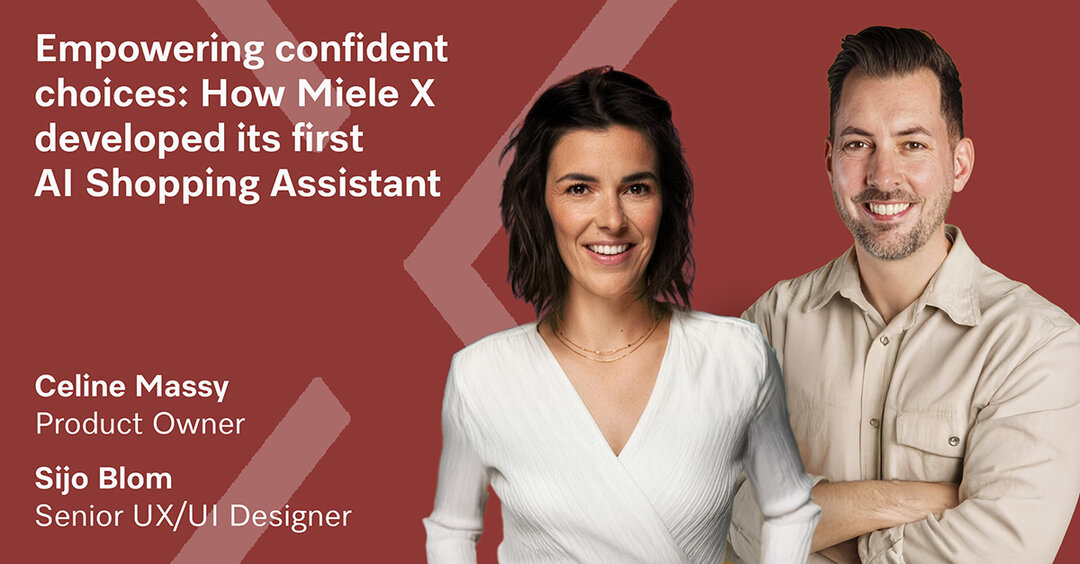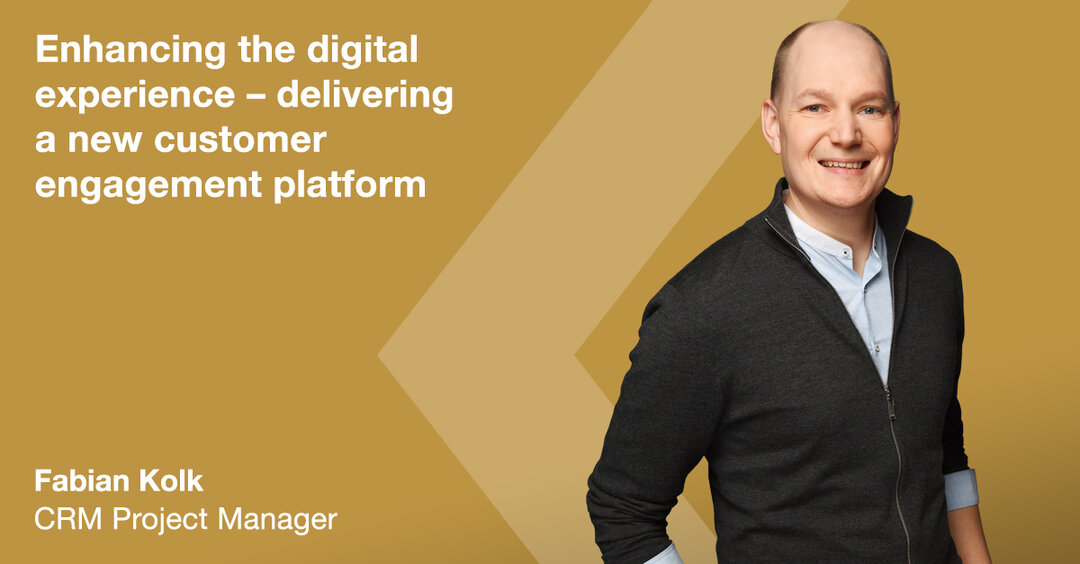For a global brand like Miele, understanding the online shopping experience of their customers is vital. And at Miele X, the User Journey Analytics team plays a key role in gathering user data that informs and shapes the website design. But analysing huge amounts of user data, while ensuring they protect user privacy can be a big challenge. We talked to Marta Gallorini, a CRO Specialist in the team, about how she developed a creative data analysis solution for one particular Customer Experience project.

Marta moved from Italy to join the User Journey Analytics team at Miele X in 2022. "I was working in digital for a major coffee company in Italy," she explains. "But I wanted to see how things were done in even bigger companies. The Miele X project was interesting for me, because I could work in a corporate environment like I was used to, but in a company with a digital focus."
At Miele X, her team's role is to analyse data on how users navigate and interact with the Miele online shop. "We try to identify their biggest pain points and frustrations, so we can inform the teams who design and change the website," she says. And she goes on to explain that this is important because it enables Miele X to deliver a user experience based on real data, rather than gut feeling. "So, part of my job is to give customers a voice, so we can create a user experience that is tailored to their needs."
Huge amounts of data
The team uses a variety of tools to gather the data they need. As well as tracking how customers navigate the Miele website, they also use surveys to gather direct feedback on customer needs and any issues they have with the site. Naturally, this produces an enormous amount of data, says Marta, and the team's job is to decide what is relevant. This can be particularly challenging for a brand like Miele, which operates in over 50 countries, because users in different nations may have different expectations.
Another challenge is ensuring that when they use this data, they protect users' privacy. "The privacy aspect is very important at Miele X," Marta says. "Compared to other companies, we take a bottom-up approach, where everybody is responsible for ensuring that everything we produce is privacy-safe. For example, I'm the privacy champion for my team, which means I answer any questions they have on privacy and make sure everything we do complies with privacy policy." She explains how her focus on privacy safety played a crucial role when her colleague Anne Crump, a Customer Experience Manager, requested an analysis of a large online user survey.
Developing a creative survey analysis solution
The survey had gathered a substantial amount of data points over a considerable time period. Anne sought a deeper and more nuanced understanding of the customers' experiences, which her team intended to use as a basis for optimizing their survey. "In most companies, they would probably use an AI tool to analyse the responses and pick out the main topics that users mention," says Marta. "But there's a privacy issue with that, because often users will include personal information such as phone numbers, email addresses or their names. If we share that information in a tool such as ChatGPT, it risks creating a data breach and possibly a fine for not managing personal data effectively." She explains that usually, this means she'd go through all the responses manually and try to connect the dots to understand the motives behind each answer. But in this case, she decided to try a different approach.
"Coincidentally, one of my personal projects was studying Python programming at that time," she explains. "So, I thought this project would be a good application of what I was learning to create a more efficient approach - and it would be scalable for future projects." So, she created a Python program that worked like a general language model, but in a more specific way, by training it to only use the data from their survey.
This involved a lot of close collaboration with Anne in the Customer Experience team. "We went beyond her initial request and developed a model that would be more scalable in the long-term," says Marta. "So, she was very supportive, open to different ideas and clarified CX capabilities and goals." She adds that Anne also ensured the project gained a lot of visibility across Miele X with people who don't generally work with data.
A more efficient way forward
Marta says the success of the project was very pleasing, because her role is all about finding opportunities. "I not only enabled the Customer Experience team to get the answers they needed, but at the same time, I improved the quality of the opportunities that I was presenting," she explains. And she adds that she's now training colleagues in her team to use Python, so they can apply the same thinking to more projects. "It's the kind of process that we can apply to many other projects, for example customer service logs or reviews, as we now have a creative and more efficient approach to analysing survey data for the future."
Blog posts
Miele's path to digital growth

Search jobs
Help to shape the digital future of one of the world’s best-loved brands.







